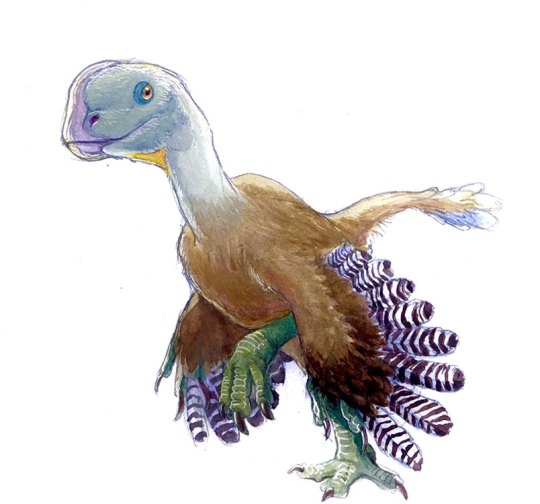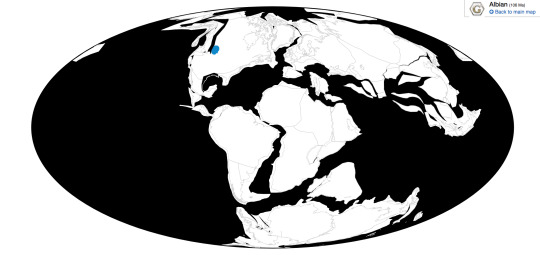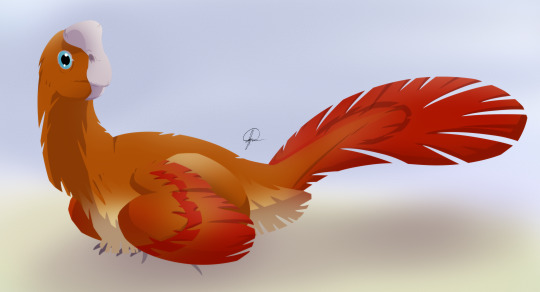#i thought we were cooking with mesozoic Dinosaurs here...
Text
im sorry im rewatching Dominion and its so fucking funny. they really brought dimetrodon & lystrosaurus' Permian Asses into it
#cmonnnnnnnn#i fondly remember struggling not to burst out laughing in the theater bc CMONNNNNN#and then the whole GiGA iS tHe biGgESt LaNd cARniVoRe eVeR#SHUT UPPPPP does spinosaurus mean nothing to you? have you forgotten her?#theyre out here acting like giga is some bad bitch#please they were only a smidge bigger than t.rex#and rexes could still body them not even a question#if. yk. they existed at the same time Which They Did Not#yk i love how the movies are like 't-rex vs [insert dino here] who would win'#and??? rex??? like every time??? she was The bad bitch. there's a reason she's called the King!!#the only loss i accept as fully realistic is prehistoric planet's rex vs quetz scenario#cause yeah. i dont think anyone would willingly fuck with a quetz#but still... if they Had to fight... yeah rex would still win#ANYWAY YEAH DOMINION BRINGING PERMIAN ANIMALS INTO IT#AND NOT EVEN SAUROPSIDS LIKE?????#DIMETRODON AND LYSTROSAURUS ARE SYNAPSIDS. LITERALLY THE START OF THE MAMMAL BRANCH OF EVOLUTION#the rest of the jurassic bullfuckery i can accept but That? too funny. too absurd#fuckin... permian animals.... in a jurassic park movie#i thought we were cooking with mesozoic Dinosaurs here...#absolutely unprompted#at least the movie gave us an on-screen theri some Gorgeous parasaurs a 'Feathered' Quetz... finally some good fucking food#still not as good as prehistoric planet's top tier beautiful amazing showstopping Up To Date dinosaurs#oh theyre so beautiful.... i cant wait for s.3 if we're getting a s.3#im still waiting for some parasaurolophus action please!!#so that i can have something better than watching Crisp Rat live my dream!!!
30 notes
·
View notes
Text
Microvenator celer

By Ripley Cook
Etymology: Small Hunter
First Described By: Ostrom, 1970
Classification: Dinosauromorpha, Dinosauriformes, Dracohors, Dinosauria, Saurischia, Eusaurischia, Theropoda, Neotheropoda, Averostra, Tetanurae, Orionides, Avetheropoda, Coelurosauria, Tyrannoraptora, Maniraptoromorpha, Maniraptoriformes, Maniraptora, Pennaraptora, Oviraptorosauria, Caenagnathoidea, Caenagnathidae
Status: Extinct
Time and Place: Between 115 and 105 million years ago, from the Aptian to the Albian ages of the Early Cretaceous


Microvenator is known from the Cloverly Formation of Montana and Wyoming; specifically the Little Sheep and Himes members of the Formation

Physical Description: Microvenator was an Oviraptorosaur - aka, a Chickenparrot - one closely related to the later Anzu from the Hell Creek formation at the end of the Cretaceous. Still, the main remains it is known from are a juvenile, which actually lead to its name - prior to further study, we thought the juvenile was as big as it got, and thus named it for its small size. As such, Microvenator probably got much bigger than the original estimates - while the juvenile was about 1.2 meters long, an adult would probably be around 3 meters long.
As a chickenparrot, Microvenator would have been fairly squat in body, and it had a shorter tail than your average dinosaur - but, as an earlier member of the group, it didn’t have a pygostyle like some of the later species. It had long arms and moderate length legs, and was covered in feathers - especially notable wings on the arms and a tail fan on the tail. It probably had a large beak, as well, but little of the skull is known.
Diet: As an Oviraptorosaur, Microvenator probably had an omnivorous diet, eating a wide variety of food, especially plants.

By Scott Reid
Behavior: Though Microvenator isn’t particularly well-known, it probably behaved similarly to its close relatives, including in taking care of its young. Oviraptorosaurs are known to have been great parents, creating large nests with eggs laid around the edge, laid from a single oviduct. Microvenator would have then sat in the center of the nest, and used its wings to keep the eggs warm - much like how birds do so today. Microvenator laid ovular, elongated eggs, which were probably turquoise or teal in color.
Microvenator was a feathered, warm-blooded animal, and thus very active in its environment and with its behavior; using its feathers to display to other members of the species for sex and communication - and its large wings and tail fan would have been excellent for these activities. As an omnivore, it would have been an opportunistic animal as it looked around its environment for food.
Ecosystem: The Cloverly Formation was one of many distinctive “middle” Cretaceous environments in Western North America, a transition between the iconic Late Jurassic and Late Cretaceous faunas of the area. Here, the Western Interior Seaway was growing in Microvenator’s backyard, which was mainly a floodplain and river system with extensive flooding that buried many animals at a time. These plains were forested, covered with many conifers and cycads.

By José Carlos Cortés
The earlier environment, the Little Sheep ecosystem, was much muddier and less associated with the sea than later times. Here, Microvenator lived with the ankylosaur Sauropelta, the ornithopod Tenontosaurus, the small fast-moving herbivore Zephyrosaurus, and the medium-sized theropod Deinonychus. There was an unnamed sauropod as well, as well as lungfish, sharks, fish, frogs, salamanders, crocodilians, and turtles - and a lot of types of mammals and lizards, which would have been decent food for Microvenator in a pinch.
The later Himes ecosystem was sandier, and more associated with the sea as it grew into North America. Microvenator still lived alongside Deinonychus, Sauropelta, and Tenontosaurus, but also the large sauropod Sauroposeidon and the poorly known Rugocaudai; a new nodosaur, Tatankacephalus, and the large predator Acrocanthosaurus which would have been a major threat to Microvenator. There also may have been a proto-bird present in the ecosystem, along with many kinds of lizards, frogs, salamanders, crocodilians, turtles, fish, sharks, and mammals.
Other: Microvenator is the oldest known Oviraptorosaur from North America!
~ By Meig Dickson
Sources under the Cut
Mackovicky, Peter J., Sues, Hans-Dieter. (1998). "Anatomy and phylogenetic relationships of the Theropod Dinosaur Microvenator celer from the Lower Cretaceous of Montana” American Museum Novitates. Number 3240, 27pp. 27 August 1998.
Maxwell, W. D. 1993. Neonate dinosaur remains and dinosaur eggshell from the Lower Cretaceous Cloverly Formation, Montana. Journal of Vertebrate Paleontology 13(3, suppl.):49A
Norell, M.A., Gaffney, E.S., and Dingus, L. 1995. Discovering Dinosaurs in the American Museum of Natural History. Alfred A. Knopf, Inc.:New York, 204 p.
Oreska, M. P. J., M. T. Carrano, and K. M. Dzikiewicz. 2013. Vertebrate paleontology of the Cloverly Formation (Lower Cretaceous), I: faunal composition, biogeographic relationships, and sampling. Journal of Vertebrate Paleontology 33(2):264-292 [
Ostrom, J. H. 1970. Stratigraphy and paleontology of the Cloverly Formation (Lower Cretaceous) of the Bighorn Basin area, Wyoming and Montana. Peabody Museum Bulletin 35:1-234
Sato, T., Y. Cheng, X. Wu, D. K. Zelenitsky, Y. Hsaiao. 2005. A pair of shelled eggs inside a female dinosaur. Science 308 (5720): 375.
Varricchio, D. J. 2001. Late Cretaceous oviraptorosaur (Theropoda) dinosaurs from Montana. pp. 42–57 in D. H. Tanke and K. Carpenter (eds.), Mesozoic Vertebrate Life. Indiana University Press, Indianapolis, Indiana.
Wiemann, J., T.-R. Yang, P. N. Sander, M. Schneider, M. Engeser, S. Kath-Schorr, C. E. Müller, P. M. Sander. 2017. Dinosaur origin of egg color: oviraptors laid blue-green eggs. PeerJ 5: e3706.
#Microvenator#Microvenator celer#Dinosaur#Oviraptorosaur#Bird#Birds#Dinosaurs#Terrestrial Tuesday#Palaeoblr#Birblr#Feathered Dinosaurs#Prehistoric life#Paleontology#Prehistory#Omnivore#North America#Cretaceous#Factfile#biology#a dinosaur a day#a-dinosaur-a-day#dinosaur of the day#dinosaur-of-the-day#science#nature
183 notes
·
View notes